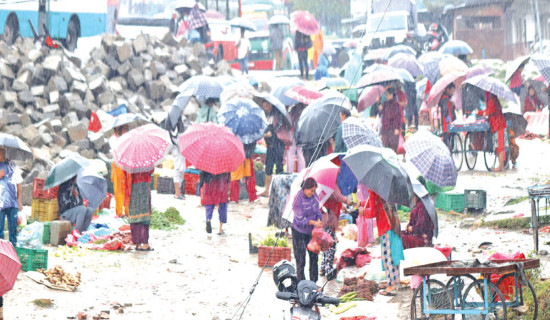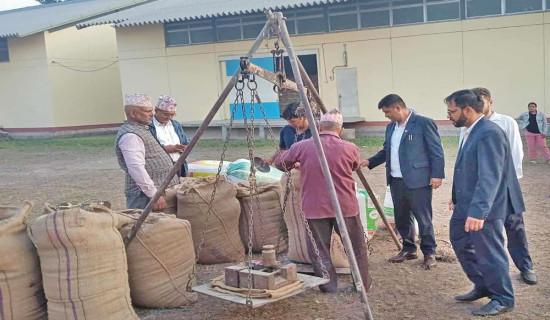- Sunday, 9 November 2025
Nation to mark National Millet Day today
Kathmandu, Aug,1: The National Millet Day is being marked for the first time in Nepal on Friday with the slogan “Diet of Millet Dishes: Base of Food Security and Healthy Life”.
The day is being celebrated nationwide to highlight the importance and potential of millet crops and to increase public interest in promoting its cultivation and consumption as well, according to Department of Agriculture under the Ministry of Agriculture and Livestock Development.
Millet crops can play a significant role in increasing the income of smallholder farmers, ensuring food and nutrition security, achieving the Sustainable Development Goals, mitigating the impacts of climate change, transforming the food system and preserving biodiversity.
Considering its importance, the Millet Day is observed on August 1 to further highlight the importance of millet crops at the national level with a focus on expanding and promoting its cultivation, said Prakash Kumar Sanjel, Director General at the Department of Agriculture.
The main event will be organised at Tathali, Changunarayan Municipality, Bhaktapur with the participation of stakeholders, including representatives from National Farmers Group Federation in the presence of Minister for Agriculture and Livestock Development Ramnath Adhikari.
Statistics show that the production and consumption of millet crops are declining due to modern lifestyles and accompanying changes in food crops.
Millet is the fourth most important cereal crop in Nepal after rice, maize and wheat.
According to the Department, millet is considered an important crop after maize in the hilly areas. It can be cultivated with less irrigation and less fertiliser. Rain water alone is enough to grow it.
Most of the arable land and climate of Nepal seem to be suitable for the cultivation of millet crops. Millet crops are also more suitable than other crops from the perspective of climate change.
As it can be grown with average yields without or with minimal use of chemical fertilisers and pesticides, it also helps reduce harmful greenhouse gas emissions and mitigate climate change, said the Department.
Millet is a good source of protein, fiber, vitamins, iron, calcium, magnesium and other elements.
"The Ministry of Health and Population believes that the rapid increase in non-communicable diseases due to unhealthy diet and modern lifestyle has emerged as the biggest challenge to public health in recent times. Multidimensional and multilateral efforts are required to address these problems.
However, it seems that it is possible to solve the existing problem through increasing the production and consumption of millet crops,” read a press statement issued by the Department.
Production only 300,000 tonnes
According to the statistics of Ministry of Agriculture and Livestock Development, around 300,732 tonnes of millet was produced last year in 224,935 hectares of land.
The productivity of millet was only 1.33 tonnes per hectare.
If advanced technology, irrigation, and fertiliser can be used in millet crops, there is a strong possibility of increasing the production and productivity of millet crops, said Sanjel.
As the United Nations declared 2023 the International Year of Millet, Nepal also celebrated it by conducting various activities. Due to the publicity and health awareness through various government and non-government agencies and media, along with the increasing demand for millet products, imports are also increasing.
According to the statistics of the Department of Customs, about 15,300 tonnes of millet products worth Rs. 766 million were imported. In the meantime, 70 tonnes of millet worth 9.47 million were exported in the last fiscal year.
There is a need to increase production and productivity with intensive research and promotion to prevent the import of millet crops, said Sanjel, who is also chairman of National Millet Day, main event organising committee.
"Despite being extremely important from a nutritional and health perspective, the production of millet is low due to traditional farming systems. On the other hand, due to the lack of knowledge about the diversification of dishes made from these crops, the consumption and marketing of the products is not as expected," he said.
According to the Department, if the variety of millet crops is diversified, the market can be expanded to include domestic and foreign tourists through private entrepreneurs, hoteliers, and homestay operators. If demand for consumption can be increased in this way, it will help in the marketing of millet crops produced and encourage farmers to produce more, it said.
In the mid- and high-hilly regions where the production of other crops is low, there is a possibility that these crops can become vital for social and economic transformation through increased production and consumption, said Sanjel.
















